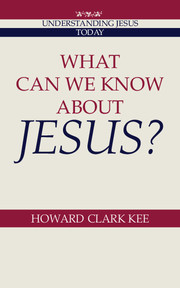Book contents
- Frontmatter
- Contents
- Introduction: Knowing Jesus and Knowing about Jesus
- 1 What Can We Learn from Sources Outside the New Testament?
- 2 What Can We Learn from Early Christian Writings Outside the Gospels?
- 3 What Can We Learn from the Oldest Gospel Source?
- 4 What Can We Learn from Our Oldest Gospel?
- 5 What Can We Learn from the Other Gospels?
- Conclusion
- Questions for Exploration
- Suggestions for Further Reading
- Index
4 - What Can We Learn from Our Oldest Gospel?
Published online by Cambridge University Press: 05 June 2012
- Frontmatter
- Contents
- Introduction: Knowing Jesus and Knowing about Jesus
- 1 What Can We Learn from Sources Outside the New Testament?
- 2 What Can We Learn from Early Christian Writings Outside the Gospels?
- 3 What Can We Learn from the Oldest Gospel Source?
- 4 What Can We Learn from Our Oldest Gospel?
- 5 What Can We Learn from the Other Gospels?
- Conclusion
- Questions for Exploration
- Suggestions for Further Reading
- Index
Summary
As we have noted, Mark seems to be our oldest gospel and therefore provides us with our earliest narrative account of the career of Jesus. Although there is no indication within this Gospel as to who wrote it, from the early days of the church there was an effort to lend authority to this account of Jesus' career and teaching by linking it with one of the apostles. It is probably because Peter figures so prominently in Mark, and because in 1 Peter 5:13 Mark is referred to as Peter's “son,” that this writing came to be attributed to Mark.
Mark's Literary Model
Was there a model for Mark to use in writing his gospel? In neither Jewish nor Greco-Roman literature of this period are there writings that resemble our Gospels in structure and strategy. There are biographies and an abundance of histories, but none combines the features of sketching the life of the central figure, giving summary reports of his teaching, and suggesting ways in which he was launching a movement. The closest analogy we have is from the Dead Sea Scrolls, in the writings known as the Scroll of the Rule and the Damascus Document, where the guidelines that are to shape the life and thought of the community are set in a framework that tells how the founder of the group was called by God and challenged to begin the work that gave rise to the new community. These writings are examples of what anthropologists call a “foundation document.”
- Type
- Chapter
- Information
- What Can We Know about Jesus? , pp. 54 - 83Publisher: Cambridge University PressPrint publication year: 1990



